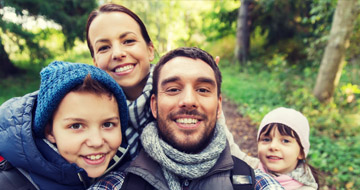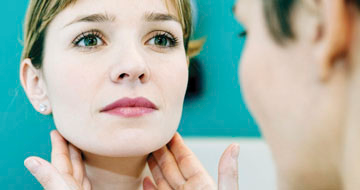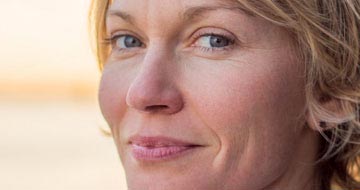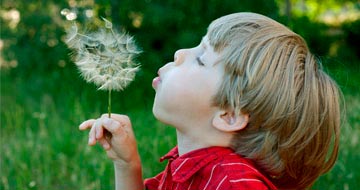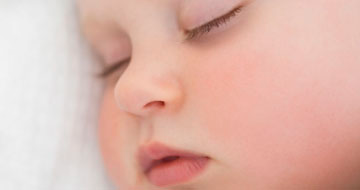
Babies Children and COVID. Consultant Paediatrician Dr Ed Abrahamson's Blog
I have changed the format compared to March to August, to directly address the key questions that are now in everyone’s minds. There is a huge amount of information now available, with 30 million worldwide documented cases (which is a fraction of the actual amount of cases, probably at least by a factor of 10).
We have seen the first phase of new restrictions. Whether they will have a significant impact on the virus spread, I am not so sure. Also, the key question is what we should be trying to achieve. There are many competing interests. Uninterrupted schooling and a viable economy are vital. Normal NHS services eg cancer diagnosis and treatment, must be protected (it suffered badly during the first wave). So, it is a tricky balance. I personally hope that if the elderly and vulnerable are shielded and those around them careful, perhaps the burden of disease will fall on those less likely to cause untenable pressure on the NHS. I passionately hope schools will stay open, but it maybe we have to limit social contact further, as in Scotland, to stem the tide.
Is it safe for my child to be in school or nursery?
Yes……is the short and emphatic answer, but of course there is a longer answer - nothing is 100% safe and indeed all the usual winter respiratory viruses will be prevalent, likely to a far greater degree and severity than COVID-19. We have already started seeing a huge spike in these, as expected having had 6 months with little exposure to viruses, now we will see them all coming down with illnesses.
it is vital children go to school. The benefits far outweigh the risks - emotional, social, educational; and this will sound strange but also immunological, ie it is important, particularly for the younger children, to be exposed to common viruses to help develop their immune systems (called adaptive immunity). It is normal that they get upper respiratory and also gastrointestinal viral infections, particularly in the winter.
All “normal” infections pose a small risk to your child. This is why some children end up in A&E, or admitted to hospital, even intensive care in small numbers every year; all viruses can cause serious complications but as below, Q2, COVID-19 seems much less of a threat. RSV pneumonia e.g., one of the commonest winter viruses, has a mortality of 0.5-1.7% in the US, around 500 deaths a year, far higher than COVID-19. Last winter there were 27 child deaths from influenza in the UK, 13 in previously healthy children.
Out of a huge cohort of worldwide cases, we know that children only form a very small proportion of overall cases, 8% in UK under 18, but 1.4% under 4 years (worldwide rate is 2-4%).
How worried should I be if my child develops COVID-19?
Not at all in the sense that the risk of significant illness has so far been shown to be exceptionally low, and this includes children with common childhood conditions such as episodic wheeze and non-severe asthma.
Hospital admission rates for children with evidence of COVID-19 infection are tiny, with only 2% of all admissions for COVID-19 occurring in children and young people below the age of 18 and only 1.1% below the age of 5. Further, whilst the mortality rate overall once admitted is 27%, the rate for children is just 1%.
In the UK, the very latest study of all hospitalised children with confirmed COVID-19 shows there have only been 6 deaths so far, all of whom had significant underlying disease. In other words, no previously healthy child has died, (the only caveat being 2 cases of MIS-C, see below, which were not included and a possible small case of cases where consent was not achieved for data to be included).
We do not know why children have been spared to this extent, unusually for a respiratory illness (although COVID-19 is clearly a multi-system illness), where children are commonly the most affected and indeed super-spreaders.
It is the opposite thankfully for COVID-19. Numerous theories exist but we still do not know the reasons. Initially it was postulated that perhaps they have cross-reactive antibodies from other coronaviruses infections which children commonly suffer from, but it is likely that is not the reason, or at least not the sole reason. The virus needs to attach itself to a specific receptor on our cells, the ACE2 receptor. Studies suggest perhaps younger children lack or have reduced expressed levels of this receptor which means the virus struggles to infect them. There is also a lot of interest in T cell responses.
What do I do if my child gets unwell?
For reasons listed above it is highly likely your child will become unwell through this winter with an upper- respiratory infection, indeed probably several times. It is far more likely this will be caused by non-COVID-19 infection. The problem is nurseries, schools, and indeed your own employers, will want to know if it is COVID-19. But this is where it gets tricky! September has demonstrated the point exactly. There has been a huge increase in demand for tests, but the capacity is not there. So, we have a major problem. Lack of access and delay to results undermines the whole government containment strategy. As we head deeper into autumn demand will accelerate further.
The Royal College have made the following abundantly clear that children with simple cold symptoms such as coryzal symptoms (runny noses) or sore throats without fever who would normally have attended schools in other times should not be tested for COVID-19. Some schools are sending these children home wrongly.
This is in agreement with current PHE guidance for deciding when to test. These symptoms are:
- new continuous cough
- fever/high temperature
- loss of, or change in, sense of smell or taste.
If these conditions are met, you will be asked to take a swab test, which you can order on-line or book at a drive thru centre, all via NHS website with a next day result, if you can get one. If you are positive, or cannot get a test, then a symptomatic person must remain isolated for 10 days and all household contacts for 14 days (or 10 days after onset of any symptoms). This is the way it was during lockdown when tests were not available.
Even with testing, there is a significant flaw in this approach. The test is self-administered, and thus you have to take a swab from your child’s throat and nose. Now even when a health professional performs the swab, the accuracy is thought to me 80% maximum, in other words it misses 20% of cases of COVID-19. Now if you consider how hard it is for us as experienced paediatricians to take a swab from a child, you can only guess how inaccurate a test performed by a parent will be. Yet this is the result that will guide you as to whether you can send your child back to nursery or school, and whether you yourself are safe to leave home (you will be self-isolating until a negative result from moment someone in family develops any of the COVID-19 symptoms).
So, where does that leave us. If you have definite proof of close contact with a confirmed (and symptomatic) case of COVID-19, and then you or your child develop symptoms within the 14 days, even if their swab test is negative, I would advise a cautious approach, and consider remaining isolated for 7 days after onset of illness. This is not however official policy, but a grey area.
Finally, as with all children who become unwell, we have a clear list of warnings signs that if they develop should result in you seeking medical help. Do not wait. The latest version is here (although it says COVID-19 specifically, safe to apply to all febrile children).
Can a child infect adults and what if there is someone vulnerable living at our home?
Yes…. This is a tricky area I am afraid.
Children can transmit the virus, and often they carry it without symptoms, so this makes it challenging. We do not know just how infectious they are however, in other words, how efficient they are at spreading (like all other respiratory viruses where they are very) or if they are not so effective sharing this virus. There are many conflicting studies and case series, some suggesting zero child to adult transmission and some showing much higher viral loads in children’s nose and throats (although not directly correlated with infectivity). Some studies have shown no child to teacher infections, others show the opposite. The best presumption is that children can infect adults, at least to some degree, but probably not that efficiently.
This does pose issues for parents of children who themselves are vulnerable, or who have extended vertical families co-habiting with elderly relatives at risk. It is very hard for these parents to make judgements on having their child at school/nursery. I wish I could give definitive answers. It will end up being a personal choice, but this scenario only affects a small number of families. And the benefit of the child being in school is enormous.
What is MIS-C (previously called PIMS-TS in the UK)? How dangerous is this?
This is a multi-system inflammatory disorder that appeared in mid-April, first recognised in the UK and lasted 3 weeks in here and then all but disappeared. Across the whole UK there were 78 admissions to paediatric intensive care with 2 deaths. Cases were then recognised in other countries. It was not Kawasaki disease, although shared some similar clinical features. All children presented with fever, around 90% had shock and abdominal symptoms. Some also had rash, and conjunctivitis. The outcome was excellent, other than 2 sad fatalities. These deaths are not counted in the BMJ review of all confirmed COVID-19 hospital admissions presumably due to unproven link ie no definitive evidence it was COVID-19 (although likely).
The disease occurred mostly in older children and those from a BAME background, and mostly previously healthy. Only 22% had a positive COVID-19 swab but studies do suggest it is likely the majority were related to recent COVID-19, reflecting a hyperimmune inflammatory response. It is now known why some children developed such a response.
Kawasaki disease, which is also an inflammatory condition, has never had its cause elucidated despite being recognised in the 1970s. Something triggers the immune system in a small number of affected children, causing it to go into overdrive and affect a range of systems, in particular the heart. It is still most likely that there is an infective trigger.
MIS-C seems to be similar in this regard but is a distinct disease to Kawasaki.
Do positive COVID-19 antibodies mean we are protected?
Possibly... for a short time.
We do not know for certain any protection is conferred, but it seems likely, particularly those who experienced severe illness, that it does. But we do not know for how long, and the best guess is sadly just months, not years. Thus, do not place too much emphasis if you get a test and it is positive. Do not feel immune or safe from having to maintain all preventative measures.
Is there likely to be a second wave and will it be as bad as the first wave?
We are already here. We are highly likely to see significant increases in case numbers over coming weeks and with testing capacity at least 10 times what it was when 5000-6000 were being reported, I think we will see far, far more cases than in the first peak (still will be an underestimate given testing capacity issues), but this will not In itself mean there is more disease.
My prediction above here has already proved correct, we have had nearly highest ever daily recorded cases, 6178… but bear in mind we are testing at least 10 times more people, so this does not mean we are seeing higher cases than then. But it is early days, and we could well start seeing up to 20,000 cases a day, maybe more. This is not the important metric. The main important ones are hospitalisations, bed occupancy in ICUs with COVID and age-adjusted all-cause mortality data.
I do not expect the UK will see a repeat of the high numbers of deaths, however. We now know who is most vulnerable and hopefully they will shield when the disease becomes more prevalent. There are also early interventions which can help in the patients admitted to hospital (steroids, anticoagulation, remdesevir eg)
But there will be deaths sadly, certainly in adults, as indeed so will there be from infiuenza and other viruses as occurs every year. We know COVID-19 causes a lot more complications than just the respiratory symptoms we first thought. In severe cases it has multi-organ effects, with thrombosis at the centre of most of these.
What is “Long-COVID”?
It is now increasingly recognised that up to 30% of adult patients who have had COVID-19, even mild disease initially, continue to suffer symptoms months later, now so-called “Long-COVID”.
The BMA have recently reported an online survey of doctors between 6 and 12th August receiving 4279 responses. Of the 3729 doctors who answered a question about patients’ symptoms, around a third (1092) said that they had seen or treated patients with symptoms they believed to be a long term effect of the patient having had COVID-19. The symptoms reported included chronic fatigue, muscle weakness, loss of sense of smell, and concentration difficulties.
King’s college have now estimated 600,000 long covid cases from their COVID-19 app symptom tracker, so you want to avoid this virus if you can.
Pregnancy and COVID-19
The Royal College of Obstetrics and Gynaecology currently advice that all available evidence suggests that pregnant women are at no greater risk of becoming seriously unwell than other healthy adults if they develop coronavirus. The large majority of pregnant women experience only mild or moderate symptom
However, in common with COVID-19 in general, those women from a BAME background, or who are obese, have diabetes or hypertension, and who are over 35, have a higher risk of complications necessitating hospital admission during the acute infection.
Should I vaccinate my child against influenza?
We strongly recommend, as always, that children receive the influenza vaccine. The NHS offers intra-nasal vaccine for all 2-10-year olds. This is mainly to reduce circulating influenza levels as thus can lessen the community spread and burden of influenza on the NHS, which is going to have enough on its hands to manage this year.
What about the COVID-19 vaccine?
There are several main candidates offering optimism, including the Oxford/AstraZenca; Sinovac and Moderna. However, given the timelines of their phase 3 trials it seems exceptionally unlikely, even if they prove to work, that we will see vaccines available until Spring/Summer 2021. When and if they do become available, the government will control stock and distribution, focusing on the most vulnerable and key workers first.
Masks
You should not wear masks with side valves on them, as are being commonly marketed. Whilst these can protect you, they do not protect others and thus are unsafe to wear. Many airlines have banned them and after a recent CDC communique, I think this will become extended. You may see FFP3 masks with valves worn by health care professionals (HCPs) in hospitals in some circumstances, but usually with a vizor as well.
Should my child wear a mask in class
The Department of Education guidelines currently state masks should not be worn in class, but now already there has been movement regarding masks in common areas. Many countries are insisting on school children wearing masks in classrooms. I am sure the situation will evolve as winter progresses.
For masks to be effective, if indeed they are (we do not have conclusive scientific proof but the prevailing view is that if we all wear them when social distancing not possible, including within indoor public spaces, there is likely to be some benefit), then everyone must wear them. This is because a person who may have the virus on board, and they wear a mask, this may reduce the amount of viral load escaping into the local atmosphere, thus reducing the risk for others. If you alone are wearing a mask in an environment where no one else is, the benefit and protection for you is probably going to be much less. So, there is little value asking your child to wear a mask in school if no one else is doing so.
Summary
We can’t pretend this is going to be an easy autumn and winter, it simply isn’t. But we have got through the most uncertain and worrying of times already. We know a lot more, we have better treatments for severe disease, and we know more about how to protect the most vulnerable. We also know how to take better care of ourselves.
We will get through this and I am here to support you through the winter including video consultations. You can get a private COVID-19 test at The Medical Chambers Kensington should you wish.
Thanks for reading this. Let me know if there are other questions you think would be beneficial for me to add and to try to answer.
Dr Ed Abrahamson MB FRCPCH
Consultant Paediatrician The Medical Chambers Kensington
Honorary Consultant Paediatric Emergency Chelsea & Westminster Hospital
Vice-President Cornwall Air Ambulance Trust
Doctor_ed@outlook.com

